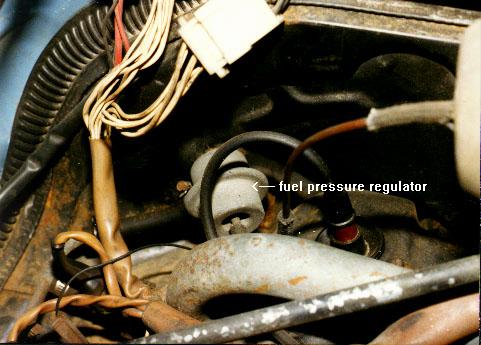Fuel Pressure Regulator
To locate the fuel pressure regulator, follow the fuel rail around your engine. The fuel rail is the pipe that carries the fuel to all the injectors and the cold start valve. It comes in on one side of the engine and goes out on the other. The pressure regulator is the last thing the fuel gets to on the way out of the engine compartment.
The fuel pressure regulator is a cylindrical metal object connected to the fuel rail and mounted to the firewall. It also has a vacuum connection to it.

The regulator's job is to keep the pressure in the fuel system to a constant 28 psi. It does this with a spring-loaded diaphragm that controls a valve. The valve, when opened by excessive pressure in the fuel lines, uncovers a fuel line that returns excess fuel to the fuel tank.
The vacuum connection is there to help reduce emissions during deceleration. During deceleration, the vacuum connection serves to open the fuel return valve wider, which reduces pressure in the system and prevents excess hydrocarbon emissions due to less fuel being injected as a result of the lower pressure in the system.
This is a very nicely designed device in that it provides for an automatic self-adjusting pressure regulator and emissions control device all rolled into one. The simplicity of the design also contributes to its reliability; the fuel pressure regulator rarely, if ever, goes bad. There's just not much to go wrong with it.
Unfortunately, it's not particularly tuneable either. With Bosch's older FI system, D-Jetronic, the fuel pressure regulator was adjustable. The L-Jetronic pressure regulator is not.
Back to the tech page.
